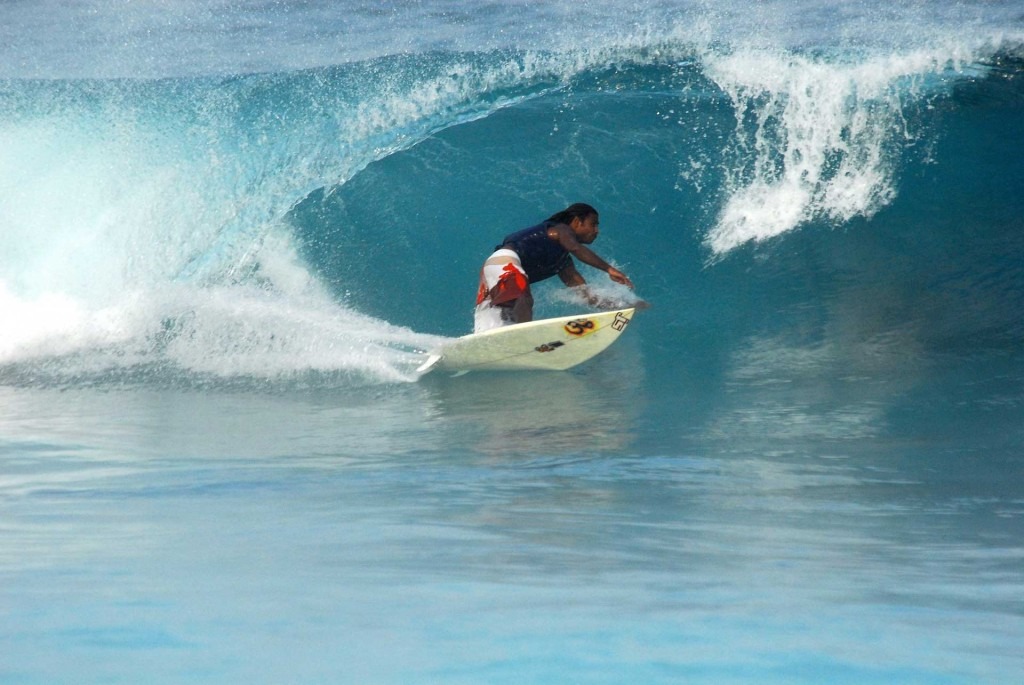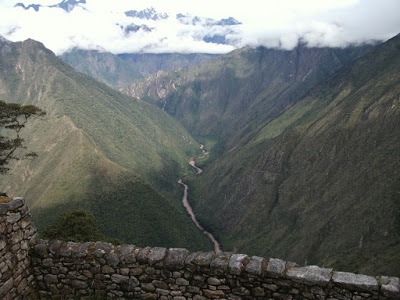
This newsletter was originally published via email on the 3rd April 2016. You can also sign up to receive Ice Cream Sundae with the form on the right-hand side column or here (The newsletter format shifted from long to shorter form since).
A few Sundaes ago I started a series to illustrate my top Gallup Strengths. For those who missed it, Gallup is an American research-based performance management consultancy. They’re particularly known for their opinion polls, and increasingly for their Strengthsfinder test and strengths based coaching.
Based on extensive research and in-depth interviews with over a million professionals in almost any type of field you can imagine, Gallup identified 34 Strengths themes in total. As of December 2015 over 13 million people have taken the Strengths test and found out what their top strengths are. I already wrote about my top strength, ideation.
This Sundae is about my second strength: Futuristic.
This is what it’s about, from Gallup’s short description:
“People exceptionally talented in the futuristic theme are inspired by the future and what could be. They energize others with their visions of the future.”
I just turned some music to listen to while writing. I appreciate mostly instrumental or electronic music while I’m thinking, writing and working. Music with lyrics distracts me. I first thought of classical and started Beethoven’s 6th Symphony “Pastoral” that I love. It only took me a few minutes to realise it wasn’t right for the context of sharing how this Futuristic theme occurs for me.
Tron Legacy’s original soundtrack by Daft Punk popped into mind and is working a whole lot better. You can read and listen along for additional atmosphere and context. Whatever you think of the movie itself, I think the soundtrack is pretty cool. It boasts a great balance of elative tunes and gritty tones.
If you have also found out about your strengths, I recently found out there is a series of discussion videos about each of the 34 strengths and how they occur for people. I just watched the one about Futuristic and learned that so far approximately 11% of the people who took the test have it in their top five, apparently one of the more uncommon ones to have.
Welcome to the future (We have ice cream cookies).
Well not the actual future, more like a few of the many visions I have of the many futures I constantly think about.
Have you ever read Choose Your Own Adventure books? You might have at least heard about them, they’re written from a second-person point of view and the reader assumes the role of the protagonist. As the reader, you are offered to choose the main character’s actions and the plot’s outcomes. At each page or two, you can either go to page x for action a; or to page y for action b.
Of course I loved these kinds of books. Imagine each one of these stories are like decision trees, different actions branching out from one beginning and leading to a variety of different outcomes.
At almost every moment of ever day I envision sights, smells, sounds and flavours of what a multitude of different possible futures could be.
That’s how my mind works, almost every moment of every day. Images, smells, sounds, flavours of what alternative moments to follow this one could be. The scenes I picture are extremely vivid. They bloom and disappear replaced by another faster than I can entirely appreciate them. There’s so much going on it can even get confusing. I need to make a mental effort to focus on one at a time, consciously slow down the flow.
I constantly play out entire fictitious conversations in my head before talking to people, many of them completely hypothetical. More often than not, it’s someone I’m going to talk to or should because I have something to tell him or her. I imagine all the different things I could say, the many different ways in which they could respond, what I’d reply for each of those, etc. On one hand I think it’s something you can identify with and to a certain level we all do, but I wonder if I, or people with similar strengths to mine, do it more than others.
I naturally ask friends what they have in mind for their future; we share and exchange how things might turn out, what could happen. I build and expand on what they’re telling me. I don’t really ever ask where people see themselves in however many years. To me the future is so fluid and bursting with possibility that a thousand answers to that kind of question would barely do it justice. All of these visions are exciting and inspiring.
Once I focus one particular vision of the future, I can share and inspire friends, family, colleagues and clients with what it can make possible.
Fortunately I can also focus on one inspiring vision and share it with others, bringing it to life. This shows up in the way I can take the lead and instigate plans for activities with friends and family for example. I share the excitement and inspiration I have for an event or occasion, I tell people how amazing it’s going to be.
I already wrote about how I love theme parks in a previous Sundae. The Disney connection reminds me of the film Tomorrowland. I thought it was brilliant and unfortunately didn’t get the box office success I it deserved. I don’t want to give away much, I just recommend checking it out if you haven’t seen it. I believe you’ll at least smile. I felt great about the future watching it.
That’s another funny thing about it: future is never here; it’s a conceptual imaginary projection. We create and recreate what the future might hold may it be a few minutes from now, a couple of hours, tomorrow or in a year. We’ll never actually get there. Meanwhile, I draw strength from imagining what could be and sharing it with others.
You probably won’t be that surprised I love science fiction.
I love reading science fiction. I get excited about new technologies and what they can make possible to benefit humanity. I look up to Star Trek’s universe; it’s a positive vision of the future and of humanity, where real global issues like hunger and poverty are no longer in large thanks to technology. Star Trek’s replicator technology can make anything including food; so material objects and possessions don’t have the same value as we give them today. I’m not a specialist Trekkie so I’m abbreviating its fictional history; in short the kind of technology described were precursors to shifting to a moneyless society and paving the way to explore space. The near ubiquitous touch screen devices we own these days owe much to Star Trek and other science fiction stories designers, scientists and engineers grew up with.
A several points in Dan Simmon’s beautiful Hyperion Cantos, we discover different branches of humanities in a far future, people evolved and adapted to different spatial, chemical and climatic environments rather than the other way round.
As a game master or storyteller in tabletop roleplaying games, I share my visions with players and bring these fictional and fantastic universes to life.
I get excited about reading and sharing about the possibilities of the future and visions of other worlds far from our own. It’s likely to be one of the reasons that got me interested in tabletop roleplaying games. As a player interpreting a character, I get to play out different possible and fictional futures of different personas I can imagine. As a game master or storyteller, I share my visions with a group of players and bring these fictional and fantastic universes to life by telling friends around the table how the world around them looks, feels, smells, tastes and sounds.
Gravitating towards new technologies was natural. The opportunity I had to learn and work as a designer was of particular interest because I’d be working with 3D technology. When I had the opportunity to start working as a strategic planner, I was and still am fascinated by how digital technologies impact communications and present both opportunities and challenges for brands to leverage. These days Virtual and Augmented Reality headsets like HTC Vive (I’ve experienced this demo, it’s amazing!), Oculus Rift or Microsoft’s HoloLens are one of the hottest topics discussed around technology and video games. The technologies aren’t yet going to be in every household, though possibilities they promise are impressive.
That said I don’t believe technology is an answer to anything in and by itself. In order to leverage them as part of a solution; challenges and opportunities need to be defined. As part of my work as a marketing strategist I often hear digital technology to be the answer before any question was asked. It’s one of the pitfalls of shiny and exciting new technologies.
The usage and democratisation of technology is growing at such a pace it is not just a dreamer’s fancy to quite seriously mention Star Trek or other science fiction franchises as inspiration to build a better future.
We don’t have to wait for negative impacts to make up a different kind of future.
I know there are heavily negative impacts to the way we’ve evolved and the technology we’re using. We are damaging the Earth we live in and large swathes of the global population live in dire conditions, lacking regular access to necessary water, food or healthcare – not to mention education. Meanwhile, I don’t think the kind of prevalent sensationalist and scandalous media is helping build and share visions of what a better future could be, nor is the trend for young adult Dystopian future à la Hunger Games.
We don’t have to wait for that to make up a different kind of future. It’s down to all of us, in every small or big way you can contribute. Consider what inspires about the future you and tell friends, family and colleagues around you. You might be surprised where the conversation takes you.
I had the chance of speaking with Cindy Gallop for the podcast a few days ago; it seems fitting to borrow her favourite quote to complete this Sundae:
“The best way to predict the future is to invent it.”
~ Alan Kay, Computer Scientist
The conversation I recorded with Cindy will be out in a few weeks, in the meantime this week I published a brilliant & fun conversation I had with Luke Crane, an award winning game designer known for his roleplaying games Burning Wheel and MouseGuard. Luke is also the Head of Games for Kickstarter, the popular online crowdfunding platform.
I hope this Sundae gives you a flavour of what having Futuristic as one of my strengths means to me. If you’re looking for science fiction of fantasy novels or movie recommendations, give me a shout. Similarly if you’d like to talk about how you or your company could be leveraging digital technologies to solve business and communications challenges, I’d definitely be up for talking.
Live long and prosper.
Best,
Willem


